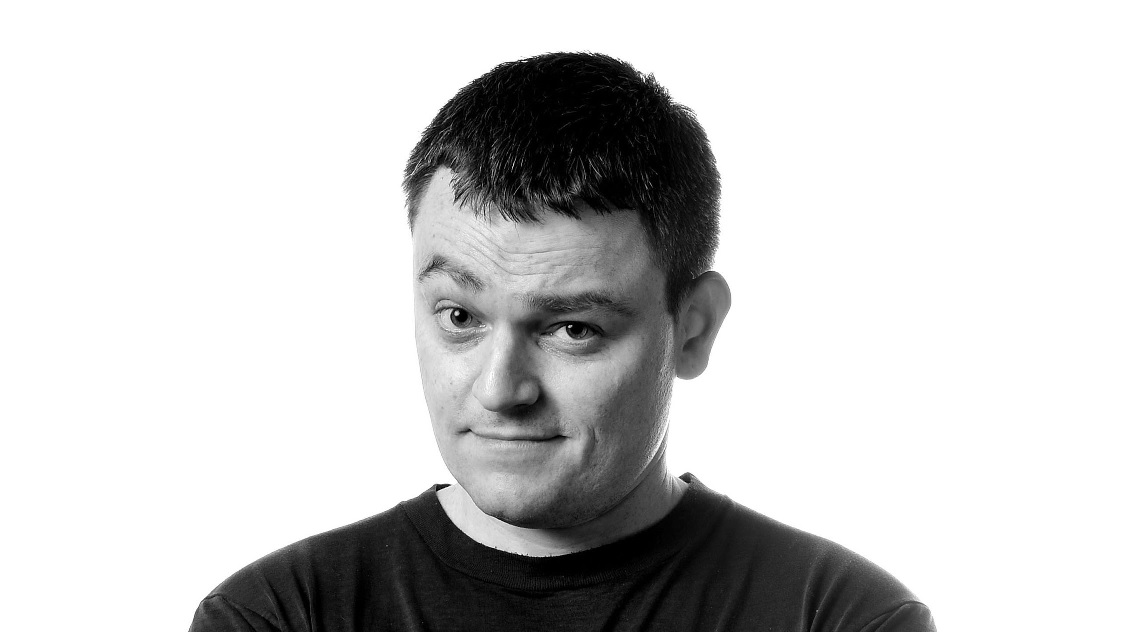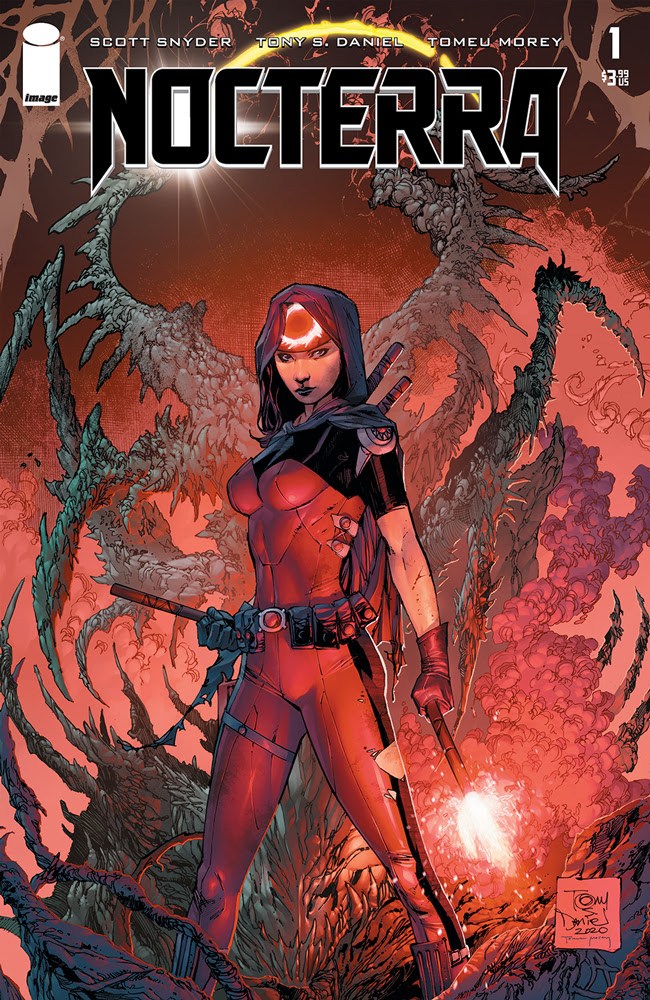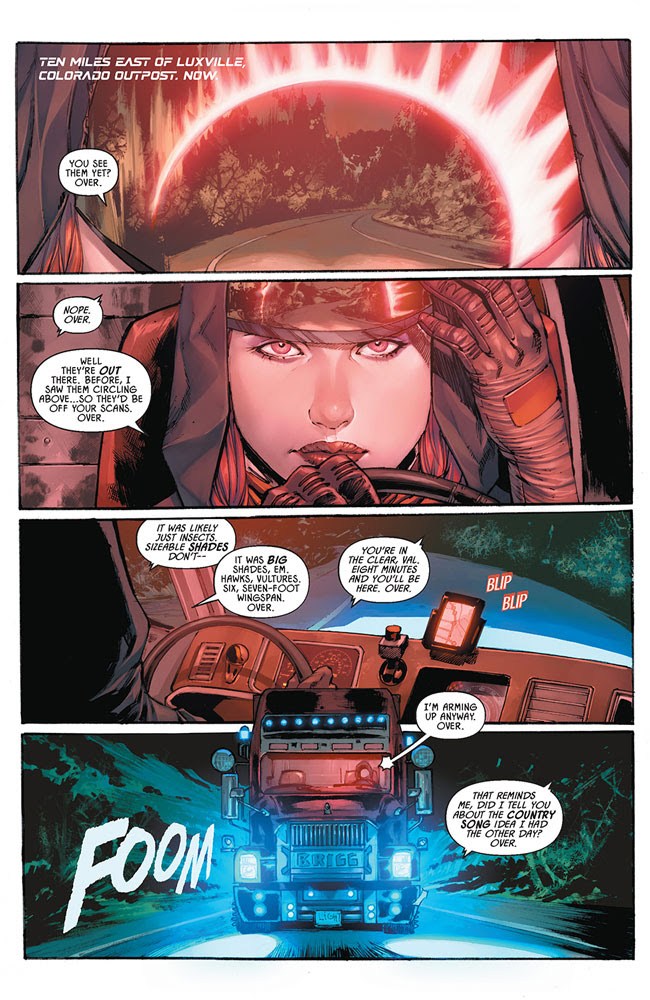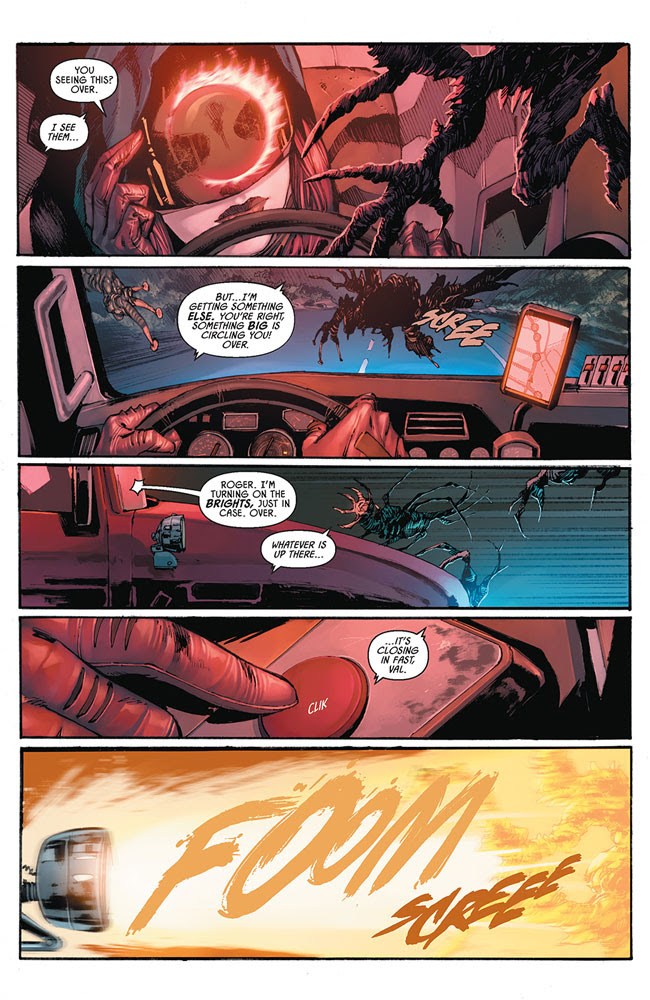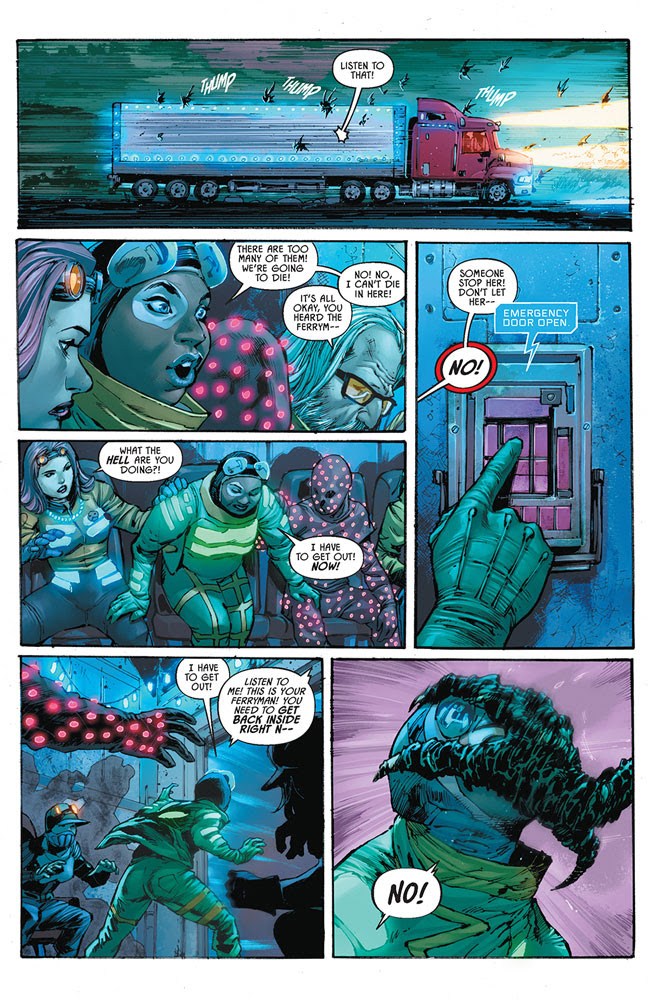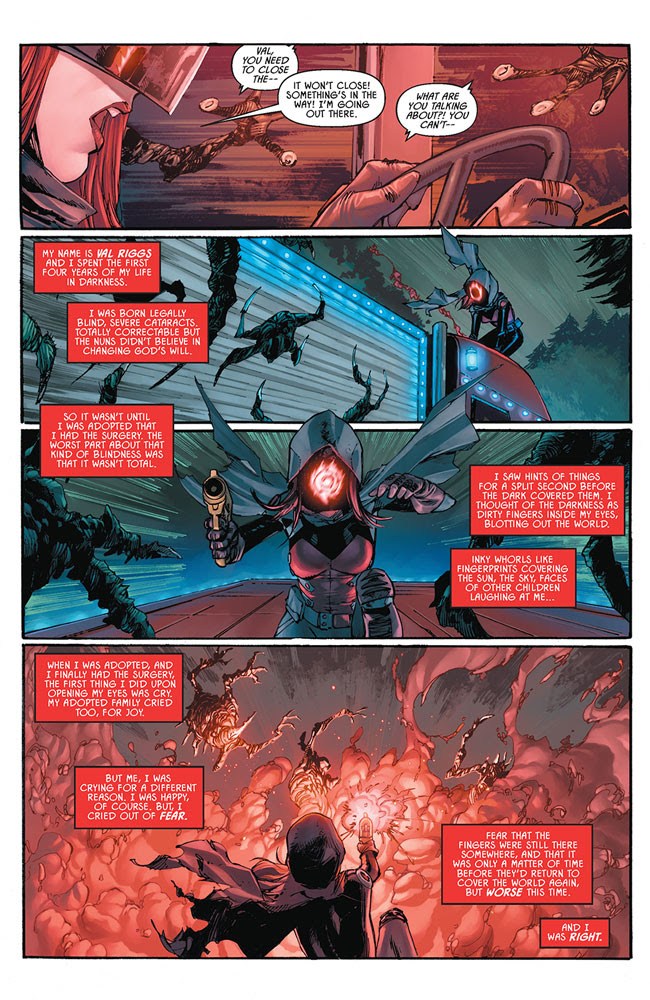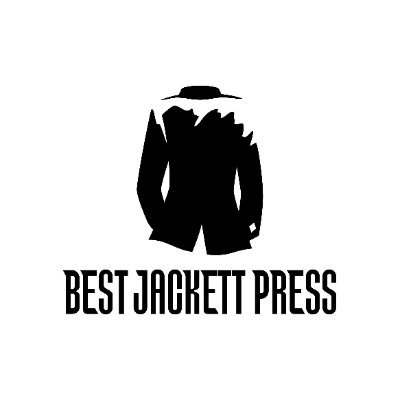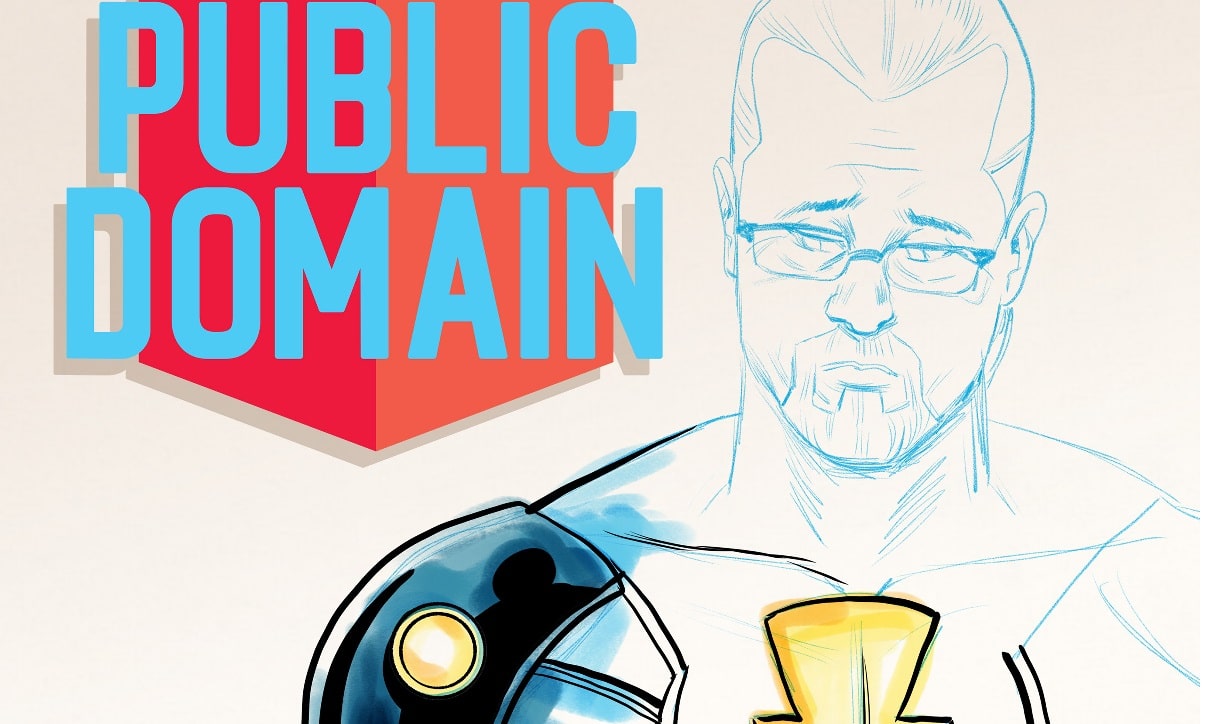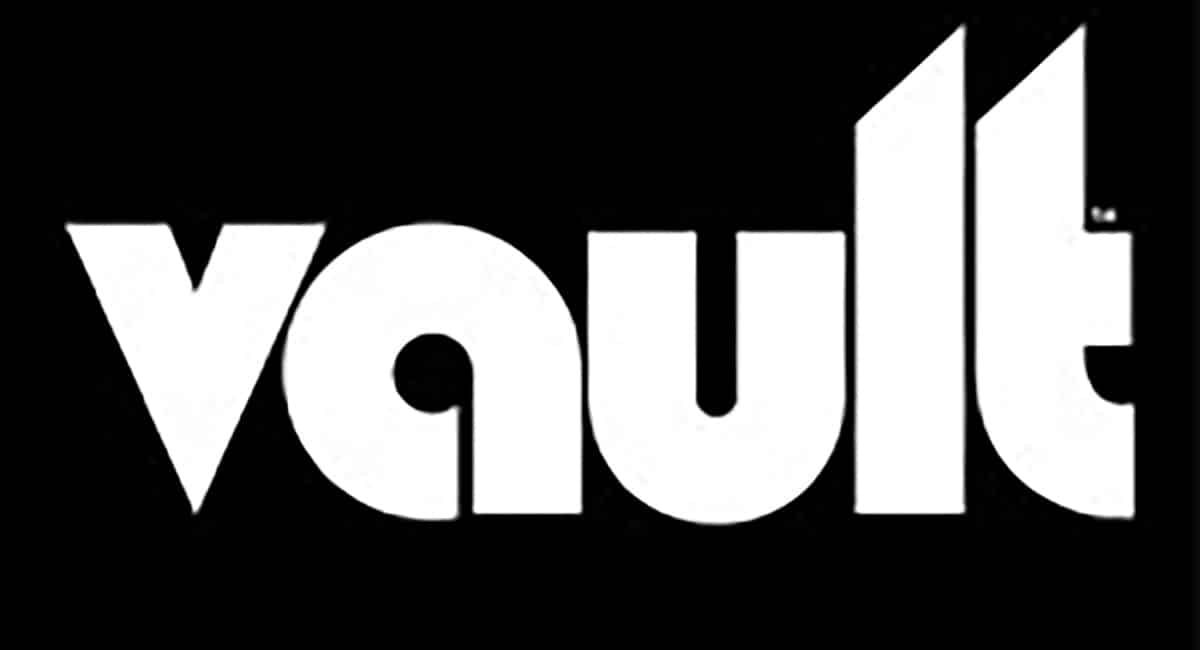When Nocterra #1 hits in March, writer Scott Snyder will be embarking on a new phase of his career — the launch of his own creator-owned imprint, one that he plans to extend across multiple publishers and more than half a dozen titles.
The full nature of that imprint — dubbed Best Jackett Press, spun from a combo of his sons’ names, Jack and Emmett — will become clear in the spring with an event to announce the line. Now, however, Snyder is focused on promoting the launch title. So much so that he took time out for a phone conversation to discuss that title, some of the books that are to come, and recharging in the aftermath of an extended run with DC.
The full chat can be found below…enjoy!
Scott Snyder talks NOCTERRA
ZACK QUAINTANCE: Last time I talked to you, you were in the middle of running the Nocterra Kickstarter while simultaneously promoting Dark Nights: Death Metal. How has life changed since then? I imagine it’s probably a little bit calmer…
SCOTT SNYDER: It is! You know, we’ve landed in a great spot. I’m really thrilled with the shape of DC right now. I think the creative decisions and the corporate decisions they’ve made in terms of Marie [Javins] being someone that they’ve elevated — and the way they’re empowering editors and creators to take some riskier moves with characters — has been invigorating. It’s a great place to leave DC in for a year right now.
At the same time, I feel like being able to live in a world that’s totally creator-owned for a bit is really invigorating. I’m really excited to show everybody what we have planned for all of Best Jackett in the late spring. We’re going to do an expo and show all the books at once, all eight or nine of them.
QUAINTANCE: So with the first book, Nocterra, how does already having a very successful Kickstarter for it change things? It seems like you already have a guaranteed audience.
SNYDER: I’m grateful there’s an awareness of it. It’s definitely different and kind of eye-opening. That’s exciting. I get a lot of people asking me about it on Twitter. They’re anticipating it, and that’s been great. But I think the fun has been trying to be really transparent, both about what the book is embracing in terms of the story and priorities — what it is about and why we’re doing the book — and also the process of making the book.
With the Kickstarter, part of the goal was really to say this is a book about collaboration, about overcoming the kind of darkness that separates us and makes us unrecognizable to one another by coming together and making things together, even when it pushes you into new territory. Doing a Kickstarter that would allow fans into the process by which Tony [Daniels] and I were making the book, it felt right for that. If you got this Kickstarter, you’ll get to see my original script with Tony’s art in black and white. It also has essays and early notes for the book. Then when you get the final product, you’ll see the dialogue and all of it is quite different. It’s vastly different, but it’s in the same spirit of what I wrote back then.
The hope is that if you get both, what you’ll see is the full process by which the two of us really build on each other’s work, build off Tomeu Morey’s amazing coloring, build off Deron Bennett’s lettering, and have help from Will Dennis who edited it. You can really be immersed in the collaborative process that I believe in in terms of making a comic. There are other ways of doing it, where you do a script, hand it to an artist, and never look at it again. I know writers who do that, and that’s totally legitimate and fine. But I’m a big advocate of this kind of thing, where you really adjust the way you write for each artist and make it something that’s organically created between the two of you with a back and forth.
It felt like a very good book to provide that window.
QUAINTANCE: I read Nocterra this morning and thought the designs were fantastic. How did you and Tony collaborate on the look for everything? I was really impressed by the splash page with the view of the whole town.
SNYDER: We collaborated really closely, the same way Greg [Capullo] and do. What we like to do is get on the phone, I’ll say, ‘Listen, I want this town to be a celebration of all kinds of lighting.’ And Tony asks what if they were celebrating 100 years of being a town that manufacturers all kinds of filaments. Perfect, let’s do it.
Then we go back and forth. What’s interesting is you can see in the script from the Kickstarter that I didn’t have a scene where they light lanterns for another town that went down into the dark. Tony wanted to do that, and once it was in there, I adjusted to it and it made the story a lot better for his input. It was that kind of thing both with the designs and with the story. It’s the best kind of process. I really try to keep people around me who like to work that way. Again, nothing against people who like to work in isolation from one another, but I have trouble with that, so I’ve tried to stick with people who I know have processes that are collaborative.
QUAINTANCE: Something I enjoyed in this book was something I enjoy about your work in general, which is the villains are really well done, both in terms of design and concept. Not to spoil anything, but the villain here feels perfect for the story. Can you talk about developing that villain?
SNYDER: I can’t wait for everyone to see him. Without spoiling too much, his name is Black Top Bill, and he’s a character who’s going to haunt the whole series. We’re going to do a bunch of arcs. This first arc is six issues, with the first and the last being over-sized, and then we’re just going to keep going. This arc leaves threads open that we’re going to pull for next arc, and [Black Top Bill] is a big part of that planning.
When you’re creating a villain, the fun is always trying to build somebody that embodies the fears you’re trying to work through for the series. So, Nocterra is all about the darkness that separates us and turns us into monsters in each other’s eyes. The villain should be not only someone who embraces that darkness, but celebrates it. Here it’s a character who speaks to that tremendously. Wait until you see what he does in issue two; he’s a lot of fun to write.
I love him because he echoes a lot of the Americana stuff I wanted to do in American Vampire and couldn’t because I didn’t have room for it. It has to do with these old folktales about the devil haunting the highways and byways of America, and here is this character who clearly is a traveler, who drives these highways and roads, and very much looks and acts like something straight out of hell.
QUAINTANCE: Can we talk a little bit about the main character, Val. I thought her family dynamic really gave her a nice origin and backstory.
SNYDER: We had a great time building her collaboratively. I wanted someone who spoke to my own fear of the dark as a kid. As an adult, I realized my fear had a lot more to do with anxiety. Anxiety is something I struggled with over the years, still do. What it does for those who don’t experience this, is that it makes you feel like all your worst fears are real, and your body acts as if they’re real. You have these panics, these physical experiences where all the alarm bells are going off. The adrenaline is pumping and your heart is palpating, and you feel as if the thing you’re worried about is going to happen, even if it’s an irrational fear and there’s very little chance of it ever becoming reality.
In the dark, all your fears are possible because it’s the unknown, it’s the uncertain, which is the most terrifying thing for someone who has anxiety. Ultimately, what you want is the certainty that it’s going to work out and these fears are not real. For me, that meant creating a character who had lived her life in a literal darkness that spoke to that same feeling. I built out the idea of her eyes being compromised, of her having cataracts. My mom is an optometrist, so I did a little bit of research with her about what that would be like.
When I spoke to Tony, he felt as a dad it would be good to bring in a character Val was protective of, and he wanted to bring in some of his own heritage. He’s Mexican-American and Irish-American. He wanted to bring in some of his own cultural background, so we did that as well. Both of those aspects of her character were introduced by him, and I think we came out great because of that. It’s because of him we built her brother Emery, and we gave her an adoptive background. As you’ll see in the story, she’s very wary of the world outside darkness holding. She’s tough. She’s got a real chip on her shoulder.
QUAINTANCE: The concept seems perfect for a horror book in that you’ve almost given yourself infinite space to bring terrors out of this darkness? The way it’s developed, it seems like anything could be lurking in that dark…
SNYDER: The whole fun of it for me was to create a world where anything could be lurking around any corner, and you really can’t see things. The world, the thing I love about it the most is it’s changing without us. It’s a whole ecosystem that just doesn’t care what happens to us. Everything is becoming unfamiliar, scary, and unrecognizable, from the foliage to the fauna. All of it. It’s all becoming things that are beyond us. We’re almost like the holdover, the thing struggling to survive.
I love that aspect of it. It gives us this feel of a post-apocalyptic world that’s blooming on its own without us. I love building it out. What until you see the human shades. They come in issue four, and they’re awesome.
QUAINTANCE: What drew you to the trucker aspect for this book?
SNYDER: It’s the marriage of two things. It’s a personal book in the way it has a message and a core fear that I think about a lot when it comes to my kids. We’re living in a moment where a metaphorical darkness does separate us from each other, making us unrecognizable and monsters from each other. There’s a temptation to isolate and protect yourself, as opposed to reaching out to other people. It’s very tempting. Those are the underpinnings of things I talk about with my kids all the time.
On the other hand, I want it to be something that drives straight up the middle — no pun intended — when it comes to summer blockbusters. It’s Spielberg, Jurassic Park fun. I love that stuff. Nocterra takes all the things I love to do with superheroes, and it brings them to creator-owned work, the way American Vampire did too. A lot of the books at Best Jackett stretch and flex different muscles you haven’t seen me try. That’s the point of the whole line.
The book with Francis Manapul is noir sci-fi. I’ve never tried that. The book with Tula Lotay is historical fiction. No horror, nothing supernatural. It’s straight-up historical drama. But to open the whole thing, I wanted to flex the muscles I love to flex the most. It has everything I love to do in one place. The trucking gave it that really heavy-fisted, big-hearted character-driven non-stop high-octane horror.
I also wanted to announce Best Jackett in a way that shows off the style I love to write, before then showing all the books that flex these different creative muscles. With Nocterra, over the years I’ve learned all these different ways to kind of razzle dazzle, to sort of grab your attention really quick. Different books have different priorities. On a book like All Star Batman, it was all about finding ways to grab your attention and do Batman in ways you maybe hadn’t seen. It was all about trying new things as a writer because I was no longer on the main book. Sometimes when you’re on a book like Batman itself or Nocterra, you put those aside.
Instead of knowing the rules and breaking the rules in ways that make sense for what a story is about, you can embrace the rules and expectations in ways that run right through it. It’s almost like the structure of the story and the way it’s told is just what you’d expect from a summer blockbuster, but my hope is that knowing the characters, writing to our own fears, the quality is such that it almost makes it too fun and too compelling not to enjoy and want to read more.
There are ways I could have done it differently, but no. Tony’s art is big-hearted, muscular, dynamic, kinetic. Let’s just embrace it, and go from point A to point C, and hopefully it’s your favorite summer blockbuster book.
QUAINTANCE: So, with Best Jackett how much will that let you get outside of doing the type of things you’ve done with your superhero stories?
SNYDER: I’m not supposed to talk about it, but I’m just going to talk about it. We’re going to have a big expo in the late spring, and I’m going to show all the books at once. By then, they’ll all have a few issues done. They’ll all be coming out staggered at different places, but we’ll have the publication schedule. By May and June, we’ll have the curtain to pull back.
I can show the book I’m doing with Tula Lotay that’s historical fiction, about somebody who is a barnstormer who returns from WWI and is flying a biplane that he bought cheap after the war, flying it across the country. It’s a totally different type of book. There’s a book I’m doing with Jock that’s part prose, but it’s a YA horror book. There’s a book with Rafael Albuquerque that’s more manga-influenced. Totally different.
The whole point is that every single book coming from Best Jackett is going to surprise you in ways that are fun. Then there are books like this. Hopefully Nocterra surprises you in terms of the quality, in terms of the high concept and how much you like the characters. It almost defies expectations by just embracing them. I’ve learned to do all this different stuff, but let’s just do one right up the middle. I love that stuff, embracing the tropes and traditions and doing them well enough that you just fall in love with it.
QUAINTANCE: Nocterra definitely has that blockbuster feel to it.
SNYDER: I think it’s a good moment for it, too. More broadly, I feel like right now there’s a lot of excitement around the kinds of things that DC — and I think Marvel too — are going to be trying in 2021. I can only speak to DC, because I know their plans. I don’t know Marvel’s plans, but I think there’s excitement around the idea at DC — at least internally — to try to bring in new readers and embrace legacy simultaneously, as opposed to putting them in conflict with one another.
That’s what Infinite Frontier is all about. It’s one big embrace of infinite possibility, but I also think that because of maybe the whole generation of readers who have come up on superhero movies and superhero overload — and because they came up on manga and anime too — they come in looking for their own stuff. It’s creating a tremendous boom in the indie world. You see it with companies like AWA, BOOM!, and Vault. They’re just kicking ass lately. And Image having books that sell over 100,000 copies on their first issue right and left between Donny [Cates] and James [Tynion]. It’s exciting.
There’s a real sudden influx of readership to the indie comics world. That wasn’t there necessarily when we decided to do Best Jackett. I just needed some creative distance from DC to be able to come back re-energized at some point at the end of the year or into 2022. But right now doing a book like this feels right. It’s going back to the kind of stuff I loved in the ’90s when Image first started. It was all about the fun and the passion of the creators. I bring my own style of writing and my own priorities to it that are different from the ’90s guys, but I still embrace that widescreen over-the-top fun with this one. It says it’s okay to do an indie book that’s also non-stop action, fun, and character-driven.
Why not go for it? If you love it, why not. If you love the story and believe in it, go for it. I don’t mind being a P.T. Barnum, a bear on a tricycle, going around being a fool in terms of how much I promote the material, as long as I love the material, whether it’s by me or other people. Here it’s the same thing. I love Nocterra. It’s one of my favorite books I’ve done.
I’m all about going out there, and being like, let’s go have some fun, get in a truck, and drive 100 miles-per-hour through monsters.


